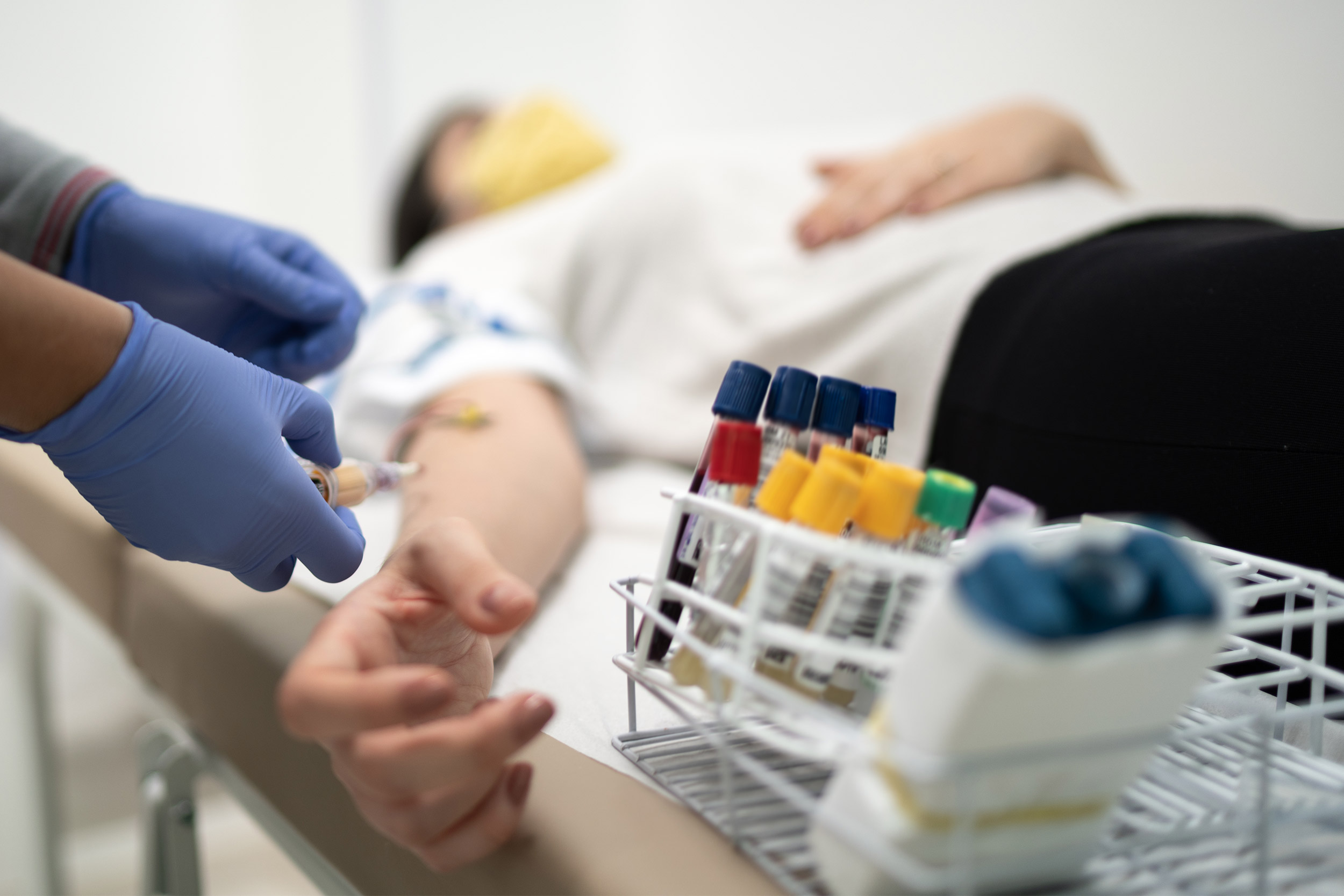
Blood test can warn women of risk decades before heart attack, stroke
Findings support universal screening of three biomarkers, not just cholesterol
Three biomarkers in blood can better predict the risk of major cardiovascular events in women decades earlier than previous tests, giving them more time to address their risk with lifestyle changes and therapeutics, according to research from Brigham and Women’s Hospital, a Harvard affiliate.
In a landmark study of 27,939 initially healthy American women, the researchers used a single measure of low-density lipoprotein cholesterol (LDL-C), or “bad cholesterol”; high-sensitivity C-reactive protein (hsCRP), a marker of vascular inflammation; and lipoprotein(a), a genetically determined lipid fraction, to predict risk over a 30-year follow-up period.
The findings were presented at the European Society of Cardiology Congress in London and published simultaneously in the New England Journal of Medicine.
“Waiting until women are in their 60s and 70s to initiate heart attack and stroke prevention is a prescription for failure.”
Julie Buring, principal investigator of the Women’s Health Study
A wake-up call for women
Heart disease is the leading cause of death for women in the U.S., with 44 percent living with some form of heart disease. In 2021, it was responsible for the deaths of 310,661 women — or about 1 in every 5 female deaths — yet only about half of U.S. women recognize that heart disease is their No. 1 killer, according to the American Heart Association and the Centers for Disease Control and Prevention.
To assess each marker as well as the combined effect of elevated levels of two or all three, the research team divided participants into five quintiles, ranging from those with the highest to the lowest levels of the markers. Researchers found that, compared to women with the lowest levels of individual markers:
- Women with the highest levels of hsCRP had a 70 percent greater risk of a major cardiovascular event;
- Women with the highest levels of LDL-C had a 36 percent greater risk;
- Women with the highest levels of Lp(a) had a 33 percent greater risk.
While hsCRP was the strongest of the three biomarkers, all were very important. More markers meant greater risk; women who had elevated levels of all three markers were 2.6 times likelier to have a major adverse cardiovascular event. This association was even stronger for stroke — women with the most elevated levels were 3.7 times likelier to have a stroke over the next 30 years.
“These data should be a wake-up call for women,” said co-author Julie Buring, principal investigator of the Women’s Health Study and an epidemiologist in the Brigham’s Division of Preventive Medicine. “Waiting until women are in their 60s and 70s to initiate heart attack and stroke prevention is a prescription for failure.”
At the time the participants were enrolled in the cohort, their mean age was 54.7 years; 25 percent had hypertension, 12 percent were current smokers, 2.5 percent had diabetes, and 14.4 percent had a parental history of myocardial infarction before 65 years of age. Nearly all were white, with good access to healthcare and medical information.
Reducing risk
Each of the three risk factors is modifiable with a combination of lifestyle changes and drug therapy. Multiple randomized trials have demonstrated that lowering cholesterol and lowering inflammation both significantly reduce risks of heart attack and stroke. Further, several new drugs that markedly reduce Lp(a) as well as second-generation anti-inflammatory agents are being tested to see if they too can lower rates of clinical events.
The new data strongly support earlier and more aggressive use of targeted preventive interventions, particularly among women for whom cardiovascular disease remains underdiagnosed and undertreated.
“Doctors cannot treat what they don’t measure,” said lead author Paul Ridker, director of the Center for Cardiovascular Disease Prevention at BWH. “To provide the best care for our patients, we need universal screening for inflammation, cholesterol, and lipoprotein(a), and we need it now.
“While we still need to focus on lifestyle essentials like diet, exercise, and smoking cessation, the future of prevention is clearly going to include combination therapies that target inflammation and Lp(a) in addition to cholesterol,” he added.
The research team analyzed data from the Women’s Health Study, funded by the U.S. National Institutes of Health through research grants to preventive cardiology investigators in the Division of Preventive Medicine at the Brigham. The trial began in 1993 and has followed female health professionals aged 45 years and older ever since. Participants had their hsCRP, LDL-C, and Lp(a) levels tested in a blood sample obtained when they enrolled in the study. The primary endpoint was a first major adverse cardiovascular event — heart attack, coronary revascularization, stroke, or death from cardiovascular causes.
Disclosures: Ridker has received research grant support to the Brigham and Women’s Hospital and/or served as a consultant to entities developing preventive strategies and treatments that target inflammation, cholesterol, and lipoprotein(a), including Novo Nordisk, Novartis, Pfizer, Agepha, and Kowa. Full disclosure forms provided by the authors are available with the full text of this article at NEJM.org.
Supported by grants (HL043851, HL080467, and HL099355) from the National Heart, Lung, and Blood Institute and grants (CA047988 and CA182913) from the National Cancer Institute, National Institutes of Health.




